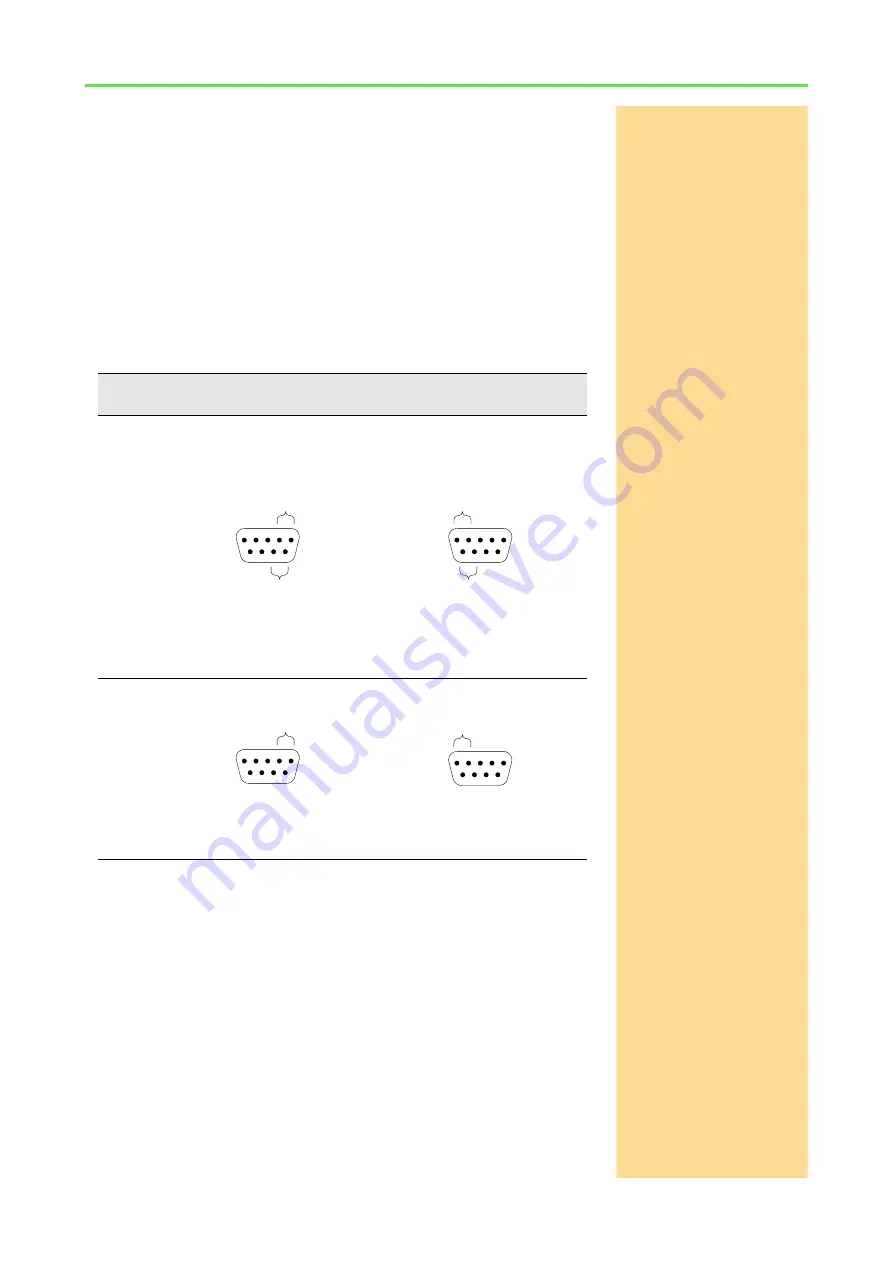
ADwin-Gold
USB / ENET, manual version 3.8, October 2005
35
CAN add-on
ADwin
9.2 CAN Interface
The CAN interfaces 1 and 2 can be operated individually. Depending on your
requirements, you can order both interfaces either as high-speed or low-speed
version. Switching in operation is not possible.
9.2.1 Hardware Description
The connections of the interfaces 1 and 2 are located on the 9-pin DSUB con-
nector:
– Interface 1: Connector (male) CAN 1.1 and connector (female) CAN 1.2.
The pins of the connectors are internally connected with each other.
– Interface 2: Connector CAN 2.
The pinouts for CAN "High speed" and "Low speed" are different.
Abb. 28 – CAN: Pinbelegungen
Both interfaces have their individual CAN-GND potential; the potentials are
both galvanically isolated from each other as well as from the mass potential
(GND) of the enclosure.
Power supply
(Low speed only)
The low speed version requires an external power supply of 12V DC to run the
CAN controller. The power must be supplied for each interface separately.
Bus Termination
(High speed only)
If the CAN interface functions as the physical termination of a high-speed CAN
bus, it must be terminated with a 120
Ω
resistor (only the first or the last CAN
node). CAN nodes, which are not positioned in an end-location, must not be ter-
minated.
If termination is required for one (or both) interfaces, the pins
CAN(+)
and
CAN(-)
must be connected by a resistor of 120
Ω
.
CAN
Bus
Male connectors
CAN 1.1, CAN 2
Female connector
CAN 1.2
High
speed
Low
speed
CAN 1.1
&
CAN 2
(male)
R
ESER
VED
R
ESER
VED
R
ESER
VED
CA
N(-)
CA
N-GND
CA
N-GND
CA
N(+)
5
4
3
2
1
9
8
7
6
CAN 1.2
(female)
CA
N-GND
CA
N(-)
R
ESER
VED
CA
N(+)
CA
N-GND
R
ESER
VED
R
ESER
VED
1
2
3
4
5
6
7
8
9
re
se
rvie
rt
re
se
rvie
rt
CA
N(-)
CA
N-GND
CA
N-GND
CA
N(+)
re
se
rvie
rt
12V (
E
ingang)
5
4
3
2
1
9
8
7
6
CA
N-GND
CA
N(-)
re
se
rvie
rt
12V (
E
ingang)
re
se
rvie
rt
CA
N(+)
CA
N-GND
re
se
rvie
rt
1
2
3
4
5
6
7
8
9
















































